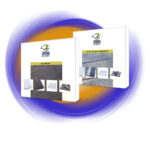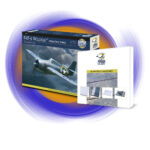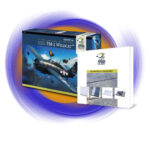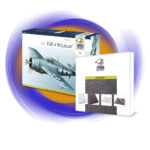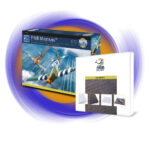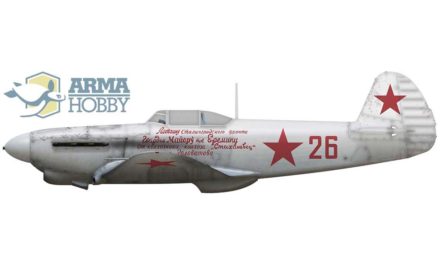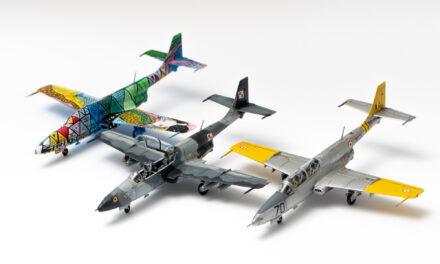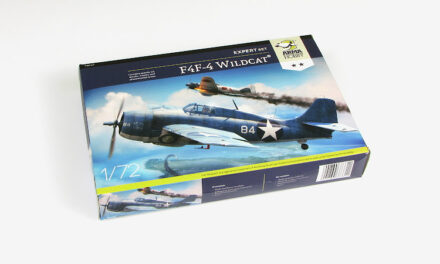
The Grumman F4F-4 Wildcat was one of the main carrier-based fighters used by the US Navy and Royal Navy during the Second World War. It was referred to as the Martlet II by the British. The British version most likely to it was the Martlet II, which differed externally only in the absence of an air intake above the engine.During Operation Torch in November 1942, Wildcats stationed on US and British aircraft carriers supported the landing of Allied forces in North Africa. These aircraft wore yellow outlines around the stars on the fuselage and wings. Interestingly, the American stars also marked British aircraft at the time, albeit briefly. The idea was to recognize them quickly against the French aircraft of the Vichy regime, but also to neutralise the resentment of the French towards the British

Kit markings
1/72 scale F4F-4 Wildcat “Operation Torch” model kit includes three different markings.

- F4F-4 Wildcat, “3512/29-GF-10”, squadron VGF-29, USS Santee, Operation Torch, November 1942

The most famous Wildcat from VGF-29 was crashed aboard the USS Santee on the morning of 8 November 1942. The aircraft had already been damaged on take-off and on landing lost its tail after being caught by the hook behind the arrester lines. The pilot, Ens. Joseph M Gallano, survived and the aircraft was promptly ejected overboard. Note the VGF-29 emblem, a mace on a white background. A distinctive huge star with a yellow border on the fuselage. The stars on the underside of the wings also had yellow borders and were a sign of quick recognition for ground troops and the anti-aircraft defence of their own ships.
More informations about this aeroplane and other US Wildcats from Operation Torch you will find in the #Armastory:
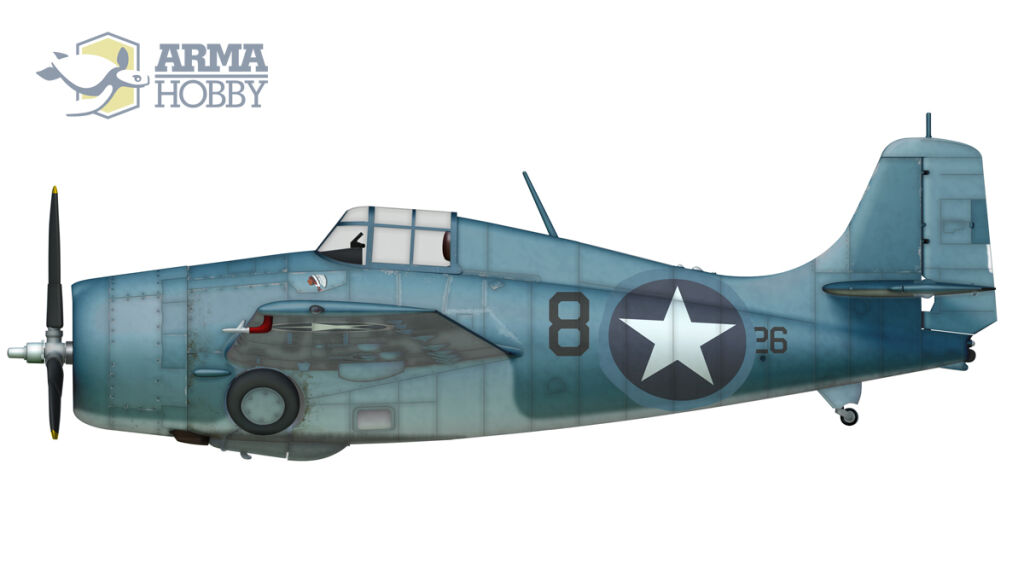
- F4F-4 Wildcat, “8-26”, squadron VGF-27, Guadalcanal, April 1943
A veteran aircraft of Operation Torch, as indicated by the yellow border around the fuselage star overpainted with a fresh camouflage colour. After intensive operations in the Atlantic in 1942, some aircraft carriers with their aircraft moved to the Pacific and took part in further battles there.

- Martlet II, “AJ148 / Ø-7A”, No. 888 FAA Squadron from HMS Formidable carrier, Oran, Algeria, December 1942.
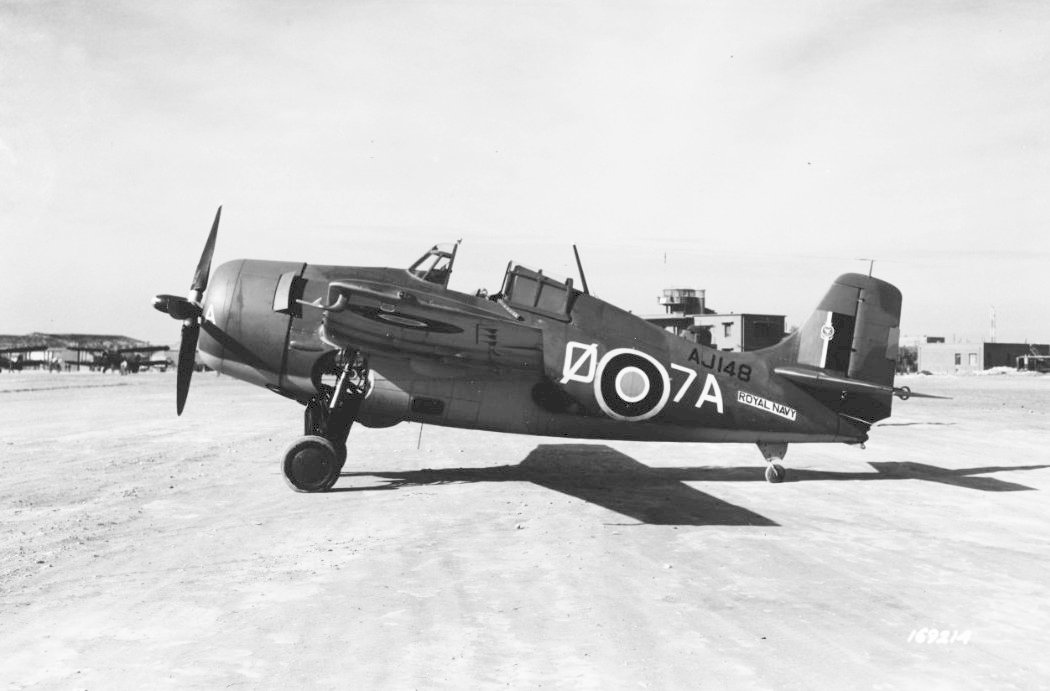
A British Wildcat, officially called a Martlet, from the famous No. 888 Fleet Air Arm squadron known as the ‘Triple Eight’ from the HMS Formidable aircraft carrier. During Operation Torch, for a brief period, the aircraft wore American stars instead of British roundels, designed to make it easier for the Americans to recognise the friendly aircraft and also to neutralise the hostility of the French from the forces of the Vichy regime. The photo shows the aircraft in December 1942, already after the British markings had been restored, at La Senia airfield in Oran.
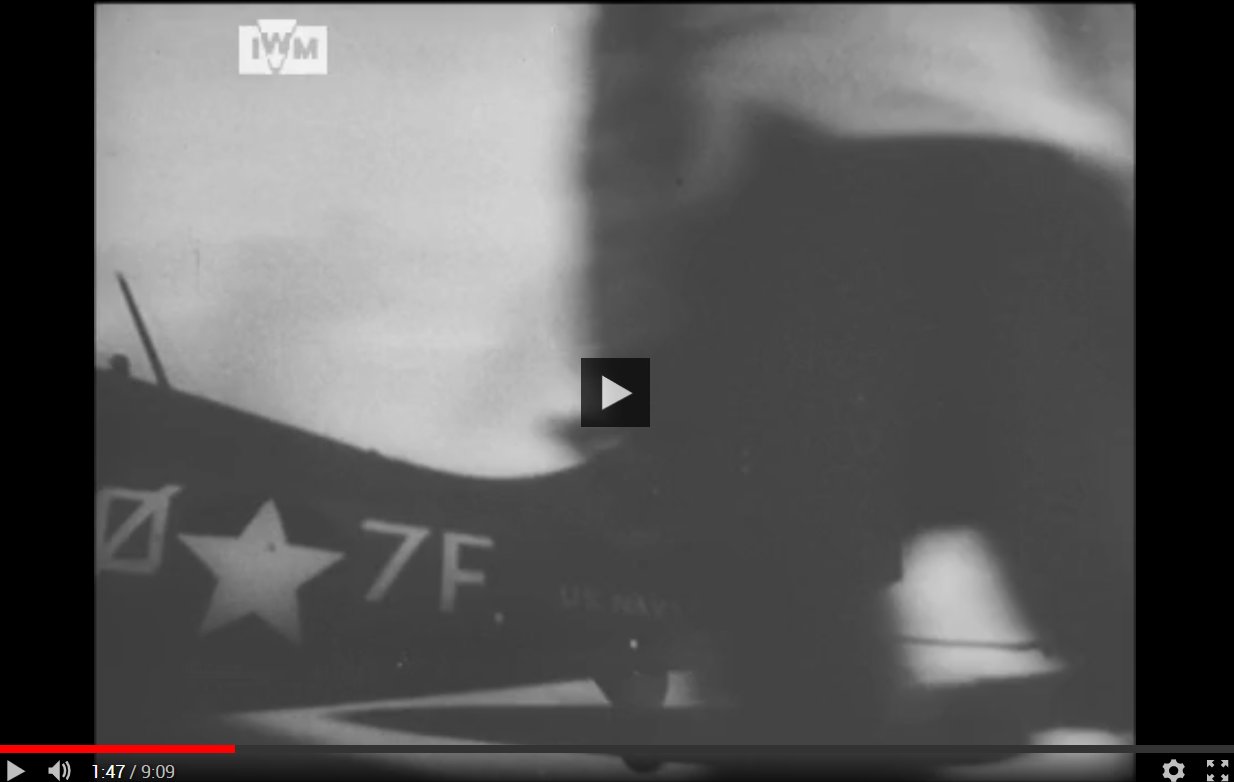
A still from period newsreel shows the British Martlet with “US” star and “US NAVY” marking.
The whole film is available on the Imperial War Museum website.
You can read more about the British Wildcats called Martlets in the #Armastory:
Promotional pre-order – only till the end of September!
The 1/72 Wildcat ‘Operation Torch’ model kits and the 1/72 ‘Escort Carrier Deck’ and ‘PSP Airfield’ diorama bases can still be ordered today in the September promotion. The promotion includes the pre-order of kits with good discounts. See what bundles we have prepared and order – shipments coming soon!
- Check and order promotional bundles online at Armahobby.com!
Check also:
Modeller, son and father of a modeller. Loves digging through references and analysing old photographs. He builds aircraft, ship and vehicle models, the older the better. He has a weakness for Polish equipment, but does not despise the RAF, FAA and Great War topics. A journalist by training.
This post is also available in:
 polski
polski


